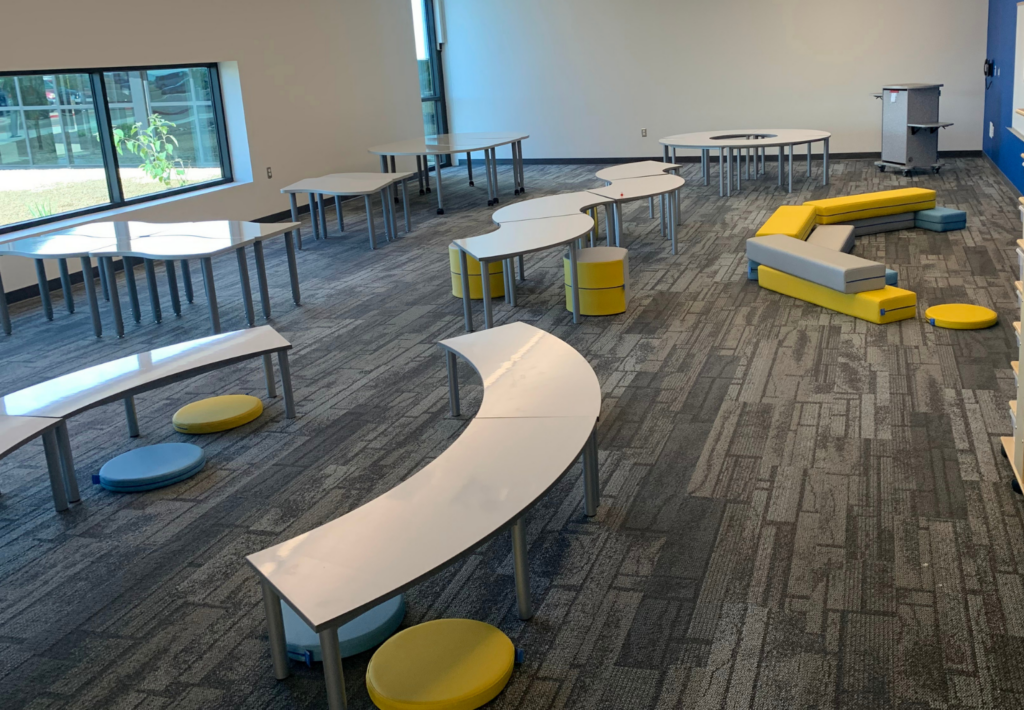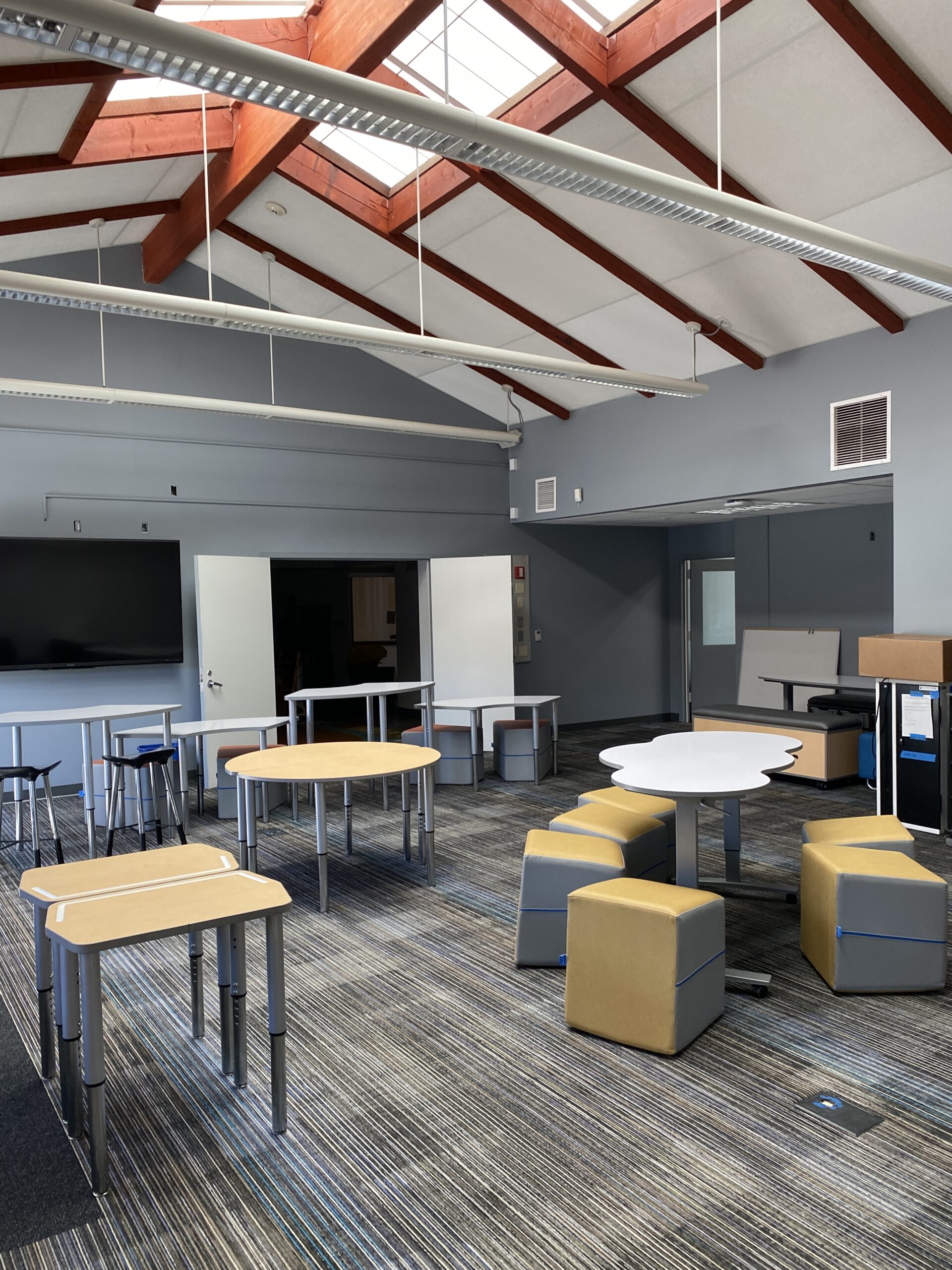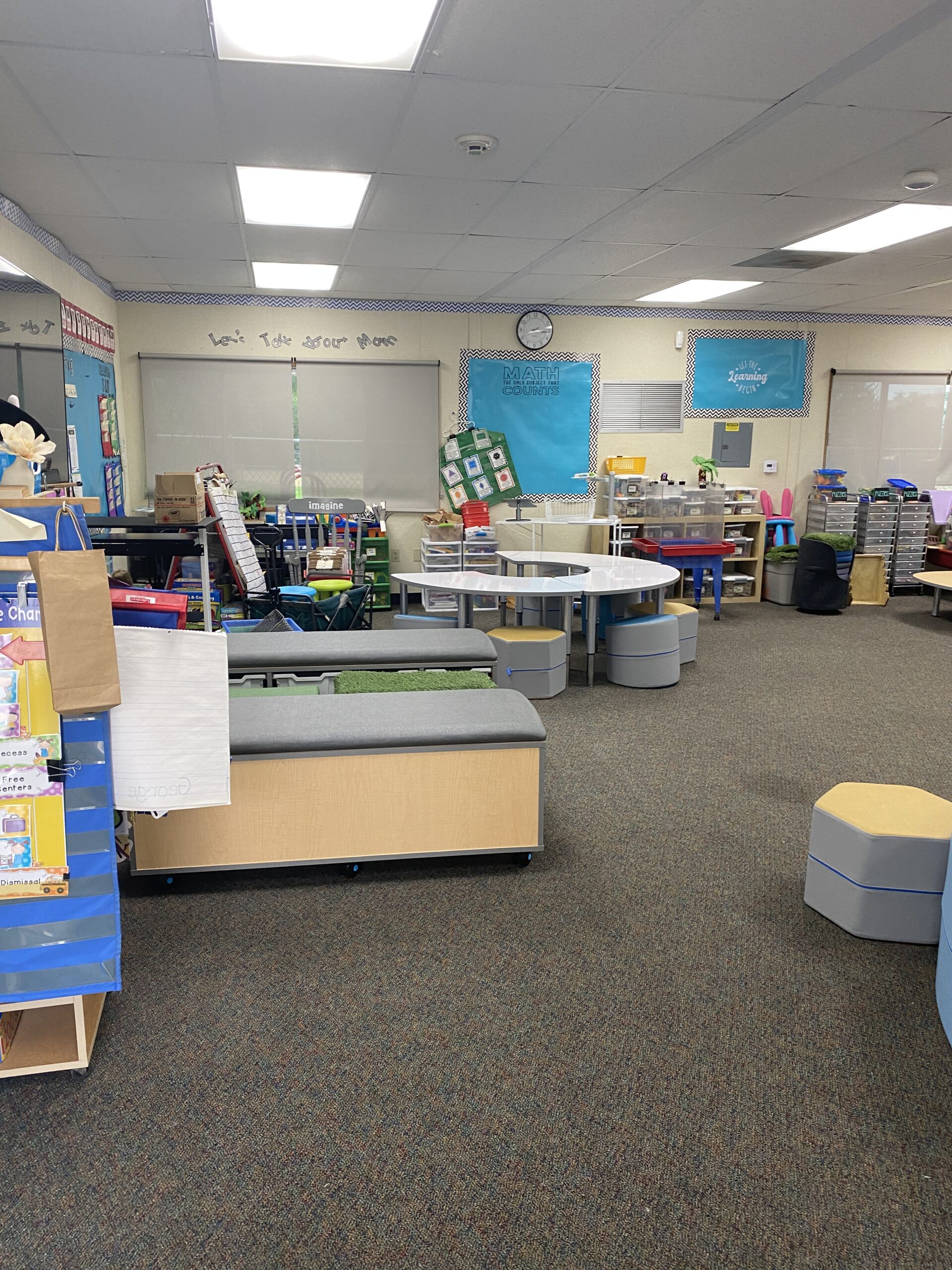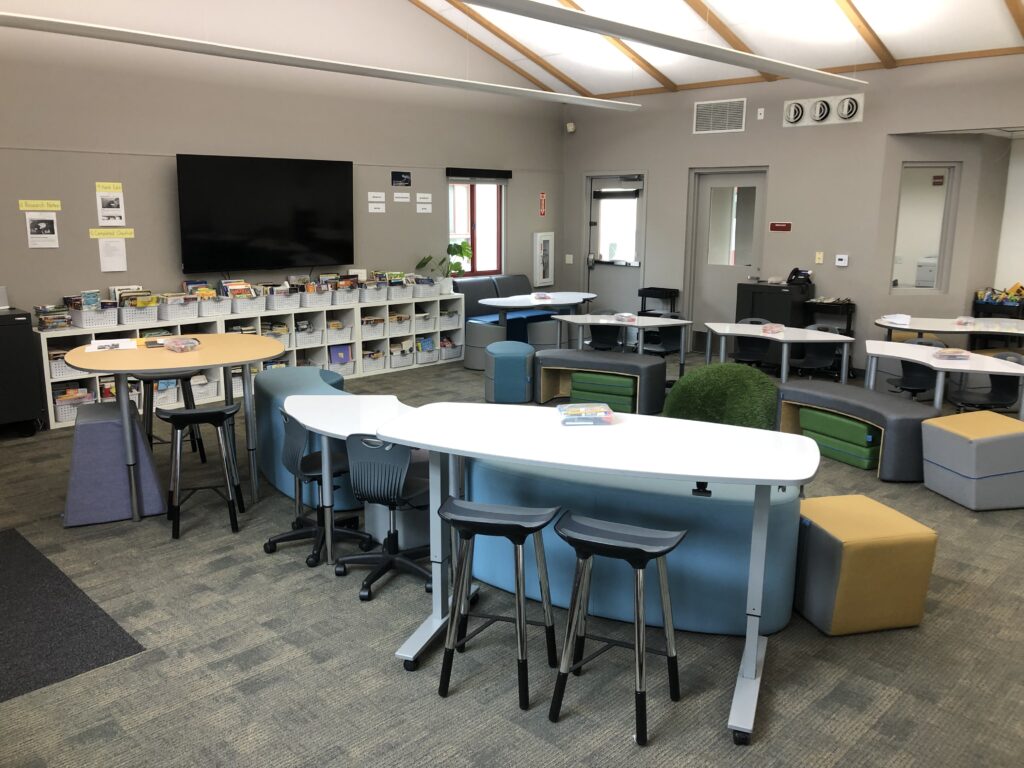The Invitation
Every type of learning environment presents an invitation. And whether it is apparent or not, this invitation gets displayed to learners and facilitators each time they walk into an educational space. Considering the overall design of an entryway, classroom, lab, common space, library/media center or any other area in an educational environment allows that invitation to become effective, invigorating, and purposeful. It provokes a more positive RSVP from both learners and facilitators alike.
The beginning of an academic year is a fantastic moment for exploration, curiosity, practice, and engaging invitations to be showcased to ALL learners, facilitators, and leadership.
Components
What should be considered an instrumental detail within a learning environment invitation? Contemplate the following four categories inspired by Mike Petrich, Karen Wilkinson, and Bronwyn Bevan and their take on fun and learning within Design Make Play.
Strategy
1: Allocations of Space
Depending on geographic location and methodology, schools utilize hundreds of curricular tools – depicting various strategies and activities that will take place. Here are a handful of well-known & well-received learner-centered instructional practices as mentioned by the University of Sandiego’s Joseph Lathan:
- Differentiated Instruction
- Inquiry-Based Learning
- Expeditionary Learning
- Personalized/Self-Directed Learning
- Game-Based Learning
- Blended Learning
- Universal Design for Learning (UDL)
Each strategy presents ideas of activities and how they should be implemented. These activities require the manipulation of physical space. Whether it’s rearranging worksurfaces, seating configurations, storage destinations, or displays… each instructional strategy requires detailed use of physical space.
“The space and activities are designed to appeal to people of all ages, and learners in the Tinkering Studio are as equally likely to be adults as they are children.” (Design Make Play 2013)
The allocation of space should be planned and determined way before learners enter the building. While compiling content and sectioning units or scopes, the allocation of space should be at the forefront of planning.
According to Responsive Classroom in What Every [Kindergarten] Teacher Needs to Know by Margaret Berry Wilson, “Think preparation, not decoration…the furniture should be minimal and functional, arranged to support how children will be working; the room organized so that they can easily find what they need and explore subject areas in a calm and hands-on way. They need a room that feels as if it is theirs, with their creations.”
2: Differentiation of Seating
Responsive Classroom emphasizes offering alternative spaces.
“Although most [learners] can work productively at tables with others around them, some may prefer more isolated spaces at times. Scatter a few desks around the room. If you can’t do this, provide children with [alternative worksurfaces]. Use Interactive Modeling to show children how to move to alternate work spaces.
According to Special Ed Resource, ‘Having choice in seating allows the students to feel empowered and will enable them to have some control over their environment. It also allows them to have choice in where, how, and with whom they work with which in turn builds higher-order thinking skills.’
As Miss Jaime, the Occupational Therapist, has found… there are ‘hidden benefits’ to incorporating differentiated seating within a learning space. Here are a few positive changes Miss Jaime observed:
- New Friendships
- Collaboration
- Improved Self-Monitoring Skills
- Stronger Classroom Management
There is a common misconception with differentiated environments that it will bring ‘more chatter’. However, Miss Jaime depicts this new sound as ‘more productive chatter’ around the classroom. She expresses, ‘Tables foster a much more collaborative learning environment. I feel that this has led to the development of stronger social skills in many of my students.’
The power of choice also allows learners to exercise their own set of self-monitoring skills. Miss Jaime shares, ‘This has been one of the more challenging skills to master but it has helped my students develop a necessary awareness throughout the school day. When I ask students to choose a ‘smart spot’, they know what is expected of them.’
3: Creativity of Storage
“The studio is thematically organized around sets of materials or phenomena that change regularly.”
The world of education is getting more and more creative with types of effective storage within learning spaces. For example, solutions might now include:
- Desk holders for water bottles
- Hanging window storage
- Party cups for dry erase marker storage
- Magnetic hooks for headphone storage
- Shoe organizers for artwork storage
- Dish rack organizers for tech storage
The list goes on and on, thanks to Jeanne Sager of TeachStarter, 2023.
But what types of storage are effective and which types allow for the accumulation of unnecessary ‘stuff’? Here are several storage criteria to keep in mind:
- Choose storage carts and cabinets from the most durable materials while keeping pieces light and mobile.
- Taller storage options, while out of ‘learner-range’, allow for more floor space.
- Shorter storage aids to the flow of a learning space and can sometimes double as seating.
- Offering mobile storage helps keep a space free flowing and clear.
4: Perception of Focus
Enjoy the following excerpt from Design. Make. Play regarding observations of focus within the Tinkering Studio:
“Visitors to the Tinkering Studio are invited to slow down, sink in, and spend time working with phenomena and materials to begin to conceive of, design, and make things themselves. Ideas, models, tools, and facilitators, and no prescribed end point. Every day, we see amazing focus, creativity, persistence, and pride developing in people of all ages as they draw on their understanding and imagination to develop and pursue an idea and to make something concrete (even if ephemeral) that represents their ideas and understanding.”
Design. Make. Play continues by highlighting a centralized question posed concerning the Tinkering Studio.
“It looks fun, but are they learning?”
“This question stymied us for many years, mostly because we did not see an inherent contradiction in the notion of people visibly enjoying themselves (engrossed, committed, joyful) and engaging in processes of learning. We were struck by how the visual amalgamation of ‘fun’ and ‘learning’ disrupted so many people’s foundational assumptions about what counts as learning…”
– Design. Make. Play. Margaret Honey & David E Kanter
Outcomes: Observable & Measurable
Time and time again, individuals are asked to display quantifiable outcomes. In education those outcomes are needed for overall credibility, budgetary support, program extension, and community engagement. The past handful of years, education has been at the precipice of monumental change – a change in how outcomes are viewed and measured… and what it truly means to gain mastery of content or components. The research shows just how impactful the physical learning space can be towards logistical data, academic achievement, social awareness/growth, and so much more.
You’re Invited
The beginning of each academic year, educational organizations are met with the incredible opportunity of creating learning spaces for learners, facilitators, school leadership, and surrounding communities.
Everyone that engages in the learning ecosystem has an opportunity to RSVP to these environments. The goal of learning space design is to ensure authentic optimistic responses.




